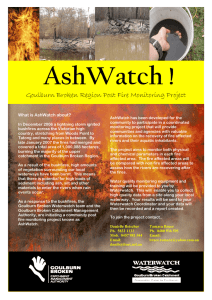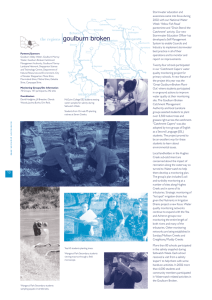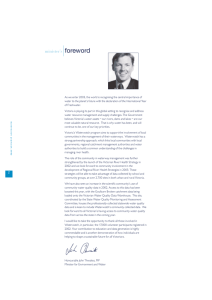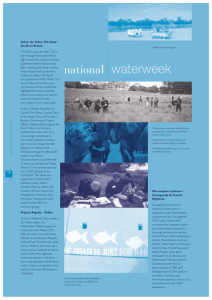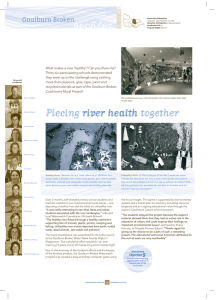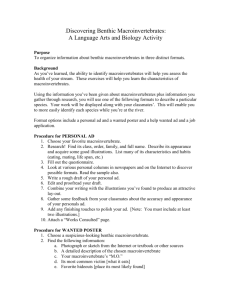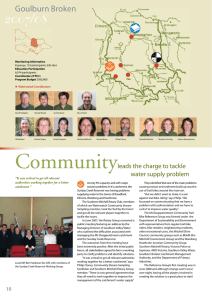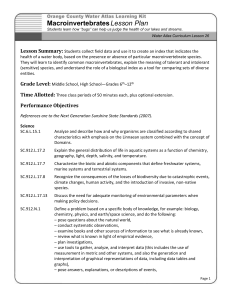Document 13168468
advertisement
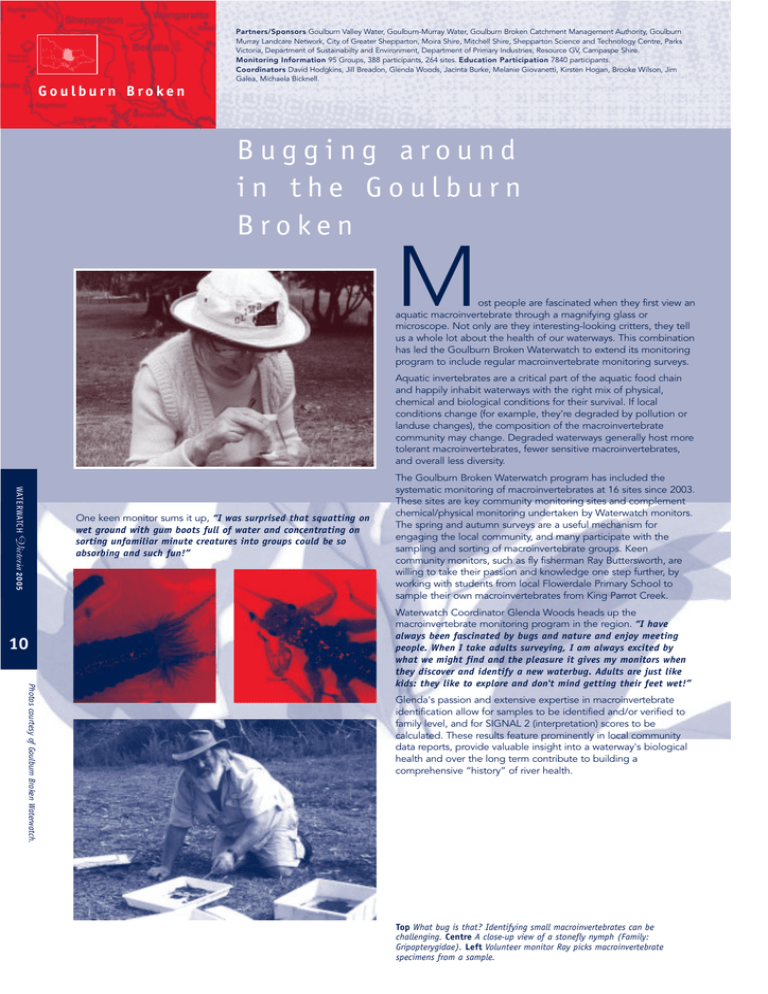
Partners/Sponsors Goulburn Valley Water, Goulburn-Murray Water, Goulburn Broken Catchment Management Authority, Goulburn Murray Landcare Network, City of Greater Shepparton, Moira Shire, Mitchell Shire, Shepparton Science and Technology Centre, Parks Victoria, Department of Sustainabilty and Environment, Department of Primary Industries, Resource GV, Campaspe Shire. Monitoring Information 95 Groups, 388 participants, 264 sites. Education Participation 7840 participants. Coordinators David Hodgkins, Jill Breadon, Glenda Woods, Jacinta Burke, Melanie Giovanetti, Kirsten Hogan, Brooke Wilson, Jim Galea, Michaela Bicknell. Goulburn Broken Bugging around in the Goulburn Broken M ost people are fascinated when they first view an aquatic macroinvertebrate through a magnifying glass or microscope. Not only are they interesting-looking critters, they tell us a whole lot about the health of our waterways. This combination has led the Goulburn Broken Waterwatch to extend its monitoring program to include regular macroinvertebrate monitoring surveys. Aquatic invertebrates are a critical part of the aquatic food chain and happily inhabit waterways with the right mix of physical, chemical and biological conditions for their survival. If local conditions change (for example, they’re degraded by pollution or landuse changes), the composition of the macroinvertebrate community may change. Degraded waterways generally host more tolerant macroinvertebrates, fewer sensitive macroinvertebrates, and overall less diversity. WATERWATCH Victoria 2005 One keen monitor sums it up, “I was surprised that squatting on wet ground with gum boots full of water and concentrating on sorting unfamiliar minute creatures into groups could be so absorbing and such fun!” 10 The Goulburn Broken Waterwatch program has included the systematic monitoring of macroinvertebrates at 16 sites since 2003. These sites are key community monitoring sites and complement chemical/physical monitoring undertaken by Waterwatch monitors. The spring and autumn surveys are a useful mechanism for engaging the local community, and many participate with the sampling and sorting of macroinvertebrate groups. Keen community monitors, such as fly fisherman Ray Buttersworth, are willing to take their passion and knowledge one step further, by working with students from local Flowerdale Primary School to sample their own macroinvertebrates from King Parrot Creek. Photos courtesy of Goulburn Broken Waterwatch. Waterwatch Coordinator Glenda Woods heads up the macroinvertebrate monitoring program in the region. “I have always been fascinated by bugs and nature and enjoy meeting people. When I take adults surveying, I am always excited by what we might find and the pleasure it gives my monitors when they discover and identify a new waterbug. Adults are just like kids: they like to explore and don't mind getting their feet wet!” Glenda's passion and extensive expertise in macroinvertebrate identification allow for samples to be identified and/or verified to family level, and for SIGNAL 2 (interpretation) scores to be calculated. These results feature prominently in local community data reports, provide valuable insight into a waterway's biological health and over the long term contribute to building a comprehensive “history” of river health. Top What bug is that? Identifying small macroinvertebrates can be challenging. Centre A close-up view of a stonefly nymph (Family: Gripopterygidae). Left Volunteer monitor Ray picks macroinvertebrate specimens from a sample.
